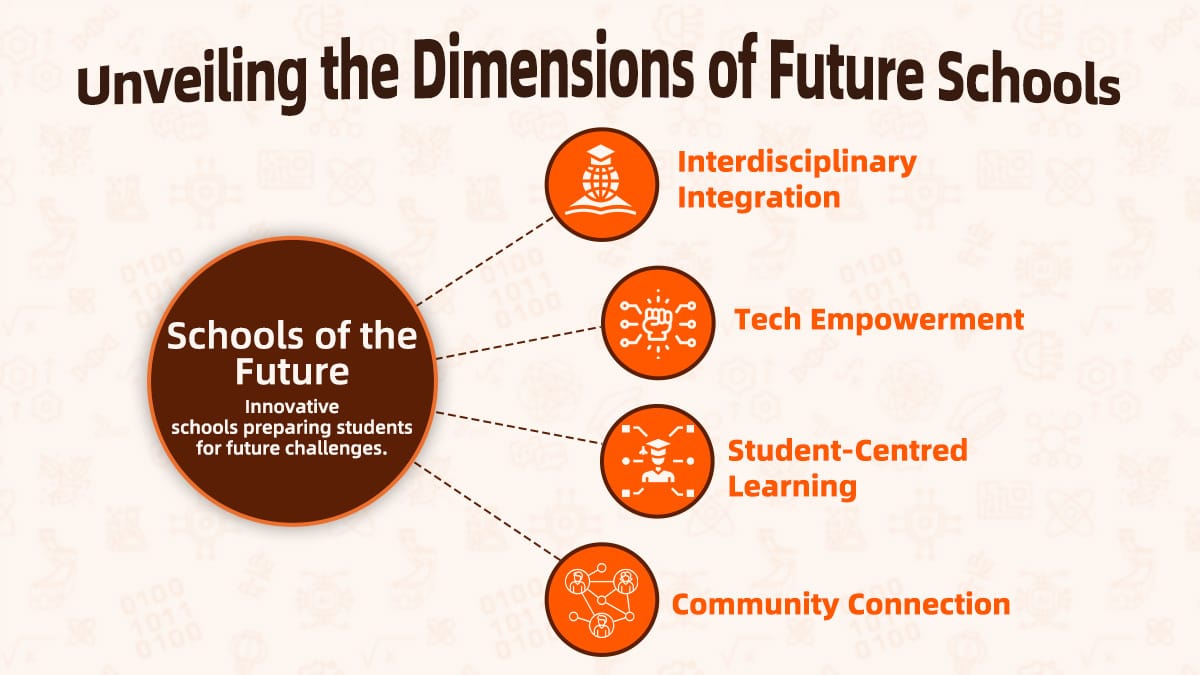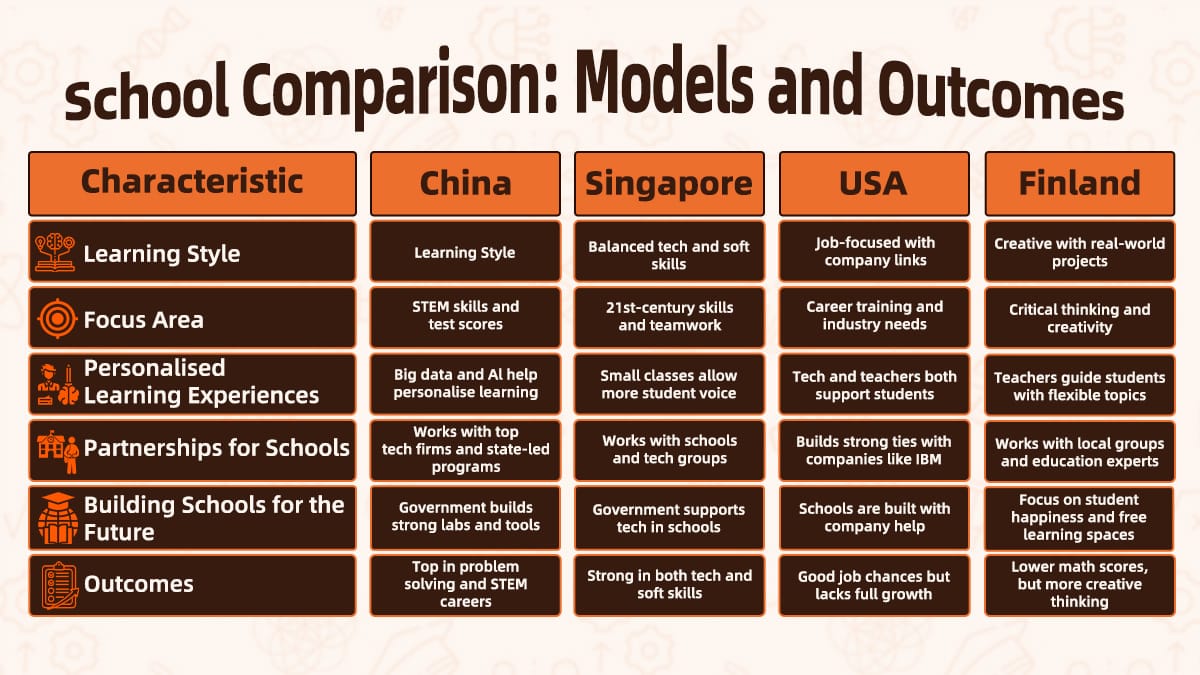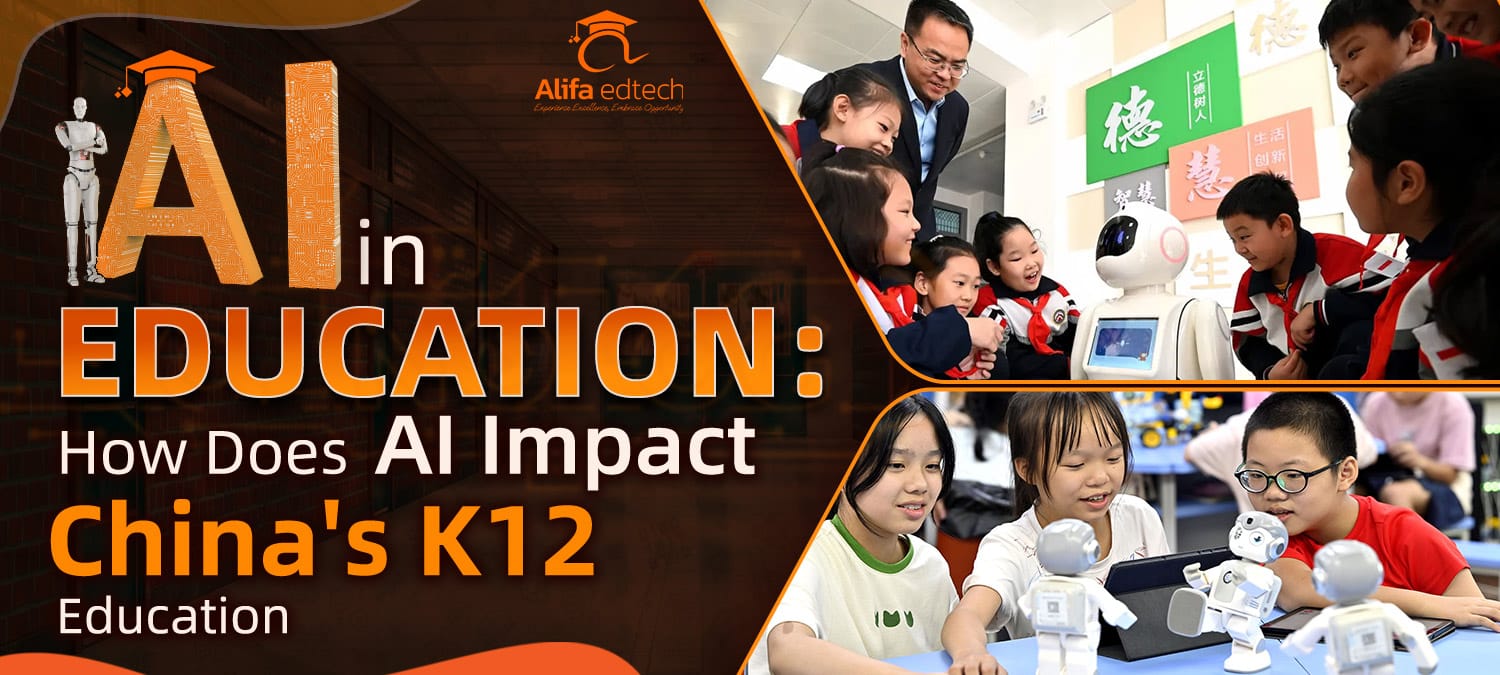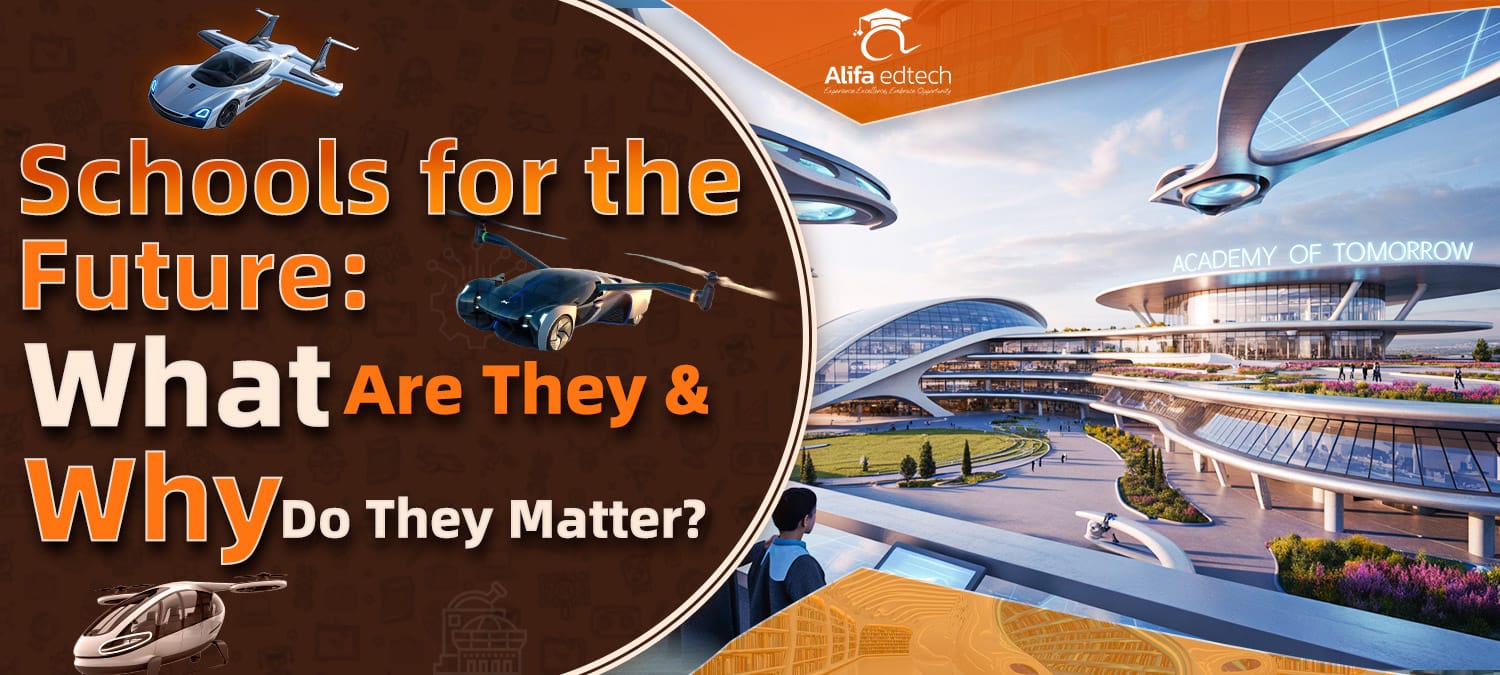The world is changing fast. New tech like AI and robots is growing every day and globally. Jobs are different now. So, the school's curriculum is also changing. Old ways are not enough. Students need new skills. They must learn how to think, create, and solve problems.
China has many schools. Their purpose is to build schools for the future. Chinese K12 schools help kids get ready for tomorrow. They use innovative tools and new ideas. China knows this is very important. This big change will help all children. It is not just about learning facts. It is about building strong minds for a better future.
This article shows how China does it. We will look at five things.
What do future schools mean? How they use new tech. How STEM helps.
How other countries do it.
And how parents can choose the right school.
Simple steps. Big change. Let’s learn how future schools help kids grow strong and ready.
Whether you seek AI integration or global collaboration, Alifa Education Services helps you partner with vetted Chinese AI firms aligned with your vision.
Alifa Education Services bridges ed-tech entrepreneurs and policymakers with China's leading AI companies. Get matched with the perfect technology partner for your region.
Book Your Partnership Consultation Today!
Tell us your needs—we'll find your ideal Chinese AI firm match.
What Are Schools for the Future, and Why Do They Matter?

Schools of the Future are not regular schools. They are smart, new, and ready for tomorrow. These schools help kids learn what they need for the future world.
- Interdisciplinary integration: This means no more learning just one subject at a time. Maths, art, and science can mix. Students think more deeply and connect ideas.
- Tech empowerment: Students use tools like AI and virtual reality. These make learning fun and help them understand better.
- Student-centered learning: Teachers use big data to know what each student needs. Learning becomes personal. It fits each child; it's not one size fits all.
- Community connection: Schools for the Future work with people outside—like businesses and families. Learning goes beyond books and classrooms.
Many countries want these schools. 78% of OECD countries plan for Schools of the Future.
Why?
Job requirements are changing. Students must be ready.
In China, there is a big goal: Education Modernization 2035. It says everyone must keep learning for life.
In a 2024 study, 83% of parents said these schools help kids be more creative. 67% of job experts said old-school ways do not match tech jobs today.
The school environment must change. It must be open and flexible. It must give personalized learning experiences.
Learning environments should help kids grow, dream, and build their future. Schools for the Future are the way forward.
How China's Schools Are Shaping Future Learning
China’s schools are changing fast. They are using innovative tools and new ways to teach. These schools help students learn better and prepare for the future world.
AI-Enhanced Personalisation
Some schools use AI to help each student learn in their own way. This is called Intelligent Tutoring Systems. For example, one school in Beijing uses smart tools to check math answers fast. Then, it gives new tasks that match the student's needs. This makes learning easy.
In 2024, the Ministry of Education said 82% of future schools now use AI tutors. These schools saw math scores go up by 23%. The visible consequences are clear—students are doing better. AI makes school smarter for the entire society.
Immersive Technologies
Some schools use fun tools like virtual reality (VR). One school in Shanghai gives students VR headsets. They use them in science class. They look at things like atoms in 3D. This helps students see hard things.
In a 2023 study, students said they enjoyed learning more. They remembered more, too—about 40% more. Interactive whiteboards and VR make school exciting and intense.
Project-Based Learning (PBL)
These schools love “learning by doing.” One school in Shenzhen works with tech companies like Huawei. They do real-world tasks.
One group made a smart water cleaner and won a big world prize. Students use a broad collection of ideas. They also use a collection of materials from real life. This helps them solve problems and help others, too.
The Role of STEM in Schools for the Future
STEM means Science, Technology, Engineering, and Math. In China, future schools use STEM to teach new skills. This helps students grow fast and become thoughtful global citizens.
Policy and Investment
The government spends big money on STEM. ¥5 billion each year. This money helps build new labs, train teachers, and make better lessons. Now, Chinese students do very well in world tests. They are number one in math and science.
Most of the top students are from big cities like Beijing and Shanghai. These places have many Building Schools for the Future. STEM is getting strong support from scientific supporters. The results show exponential growth in learning.
Want to put your brand in front of families, students, and education-focused readers? We're inviting select partners to advertise with us on our trusted blog.
Want to get featured? Click 'Learn more' and submit a story for us to include.
Curriculum Integration
In future schools, STEM is everywhere. Kids start early. They learn coding with Scratch Jr. Later, they build things like strong houses in science class. In high school, they can study robots, biotech, and AI. Some schools work with universities.
One of the top schools in China teaches STEM through business ideas. Students even make new things and get patents. These innovative Partnerships for Schools help kids learn real-world skills.
Career Readiness
STEM helps students get ready for work. China needs 100 million tech workers by 2030.
Future schools help students find jobs. 78% get work or internships in top tech firms. Old schools only allow 45%. STEM opens doors. It gives students a chance to join big companies like Alibaba. STEM makes them ready for global citizenship.
Comparing Schools for the Future: Models and Outcomes
Schools for the Future are growing in many places. Each country uses its own way. Some focus on tech. Others focus on soft skills. Let’s see how China, Singapore, the USA, and Finland compare.

How to Choose the Right Future-Focused Chinese School for Your Child
Picking a school is hard. Future-focused schools teach new skills. They use tech and real-world learning. Choose a school that helps your child grow strong and smart.
Curricular Innovation
Choose a school with fun and innovative lessons. Look for AI, virtual reality, and hands-on projects. STEM certificates are also good. These help your child get ready for tech jobs. Good schools give personalised learning experiences. That means each child learns in their way. Schools For Future use new ideas to teach every day.
Teacher Expertise
Teachers must know how to teach in new ways. Ask if they have special training. In China, many teachers get Future Teacher Program certificates. This shows they are ready to teach smart kids. Strong teachers help your child learn better. They help kids love science, tech, and more.
Partnerships and Facilities
Good schools work with big tech companies. These are called Partnerships for Schools. Some names are Tencent and DJI. Students can join real-world projects. Visit the school. Check labs, makerspaces, and tools. Building Schools for the Future means strong labs, good computers, and places to make new things.
Alignment with Career Goals
Every child is different. Some love robots. Others want to start a business. Choose a school that helps your child do what they love. Some schools have robot clubs. Others have business classes and startup programs. These things make kids ready for the real world.
School Rankings and Reputation
Check school rankings. The China Future School Index shows the best ones. Good schools have bright students, cool lessons, and real-world work. Famous names include SAS and Beijing National Day School. These schools are trusted and well-known.
Wrapping Up
China is changing their K-12 school curriculum fast. They want kids to learn more than just facts. It wants kids to think, create, and solve. STEM, projects, and tech help this happen. These are the tools of tomorrow. Parents must choose schools that see the future. Schools for the future help children grow strong. The future is near. The right school will help your child shine in that future world.
Join the AI-Powered Education Movement. Empower your institution with the right Chinese AI partner. Alifa Education Services helps education leaders and ed-tech startups find perfect-fit solutions.
Related Articles













Member comments